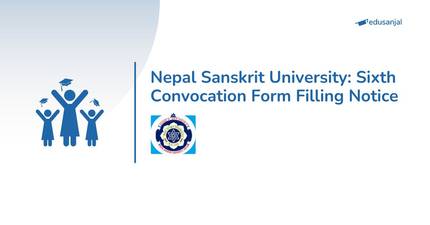The highest institution of the science and technology field in the country, Nepal Academy of Science and Technology (NAST) has appointed a Vice-Chancellor after seven months.
Food technology expert and professor Dilip Subba has been appointed as the Vice-Chancellor of Nepal Academy of Science and Technology (NAST) by Prime Minister Pushpa Kamal Dahal, who is also the Chancellor of NAST. The previous Vice-Chancellor, Sunil Babu Shrestha, had completed his four-year term and left NAST leadership vacant since Magh 3 of the previous year.
On the first of Asadh, Prime Minister Dahal had formed a recommendation committee for the appointment of the Vice-Chancellor. The committee, chaired by the Minister of Education, Science, and Technology, included two members from NAST's management council: Professor Shailendra Kumar Mishra and Bharat Mani Pokharel. The committee had set a deadline of Asadh 10 for interested candidates to apply for the Vice-Chancellor position, receiving applications from 31 individuals. After evaluating the applications, the committee had recommended three candidates, including Dilip Subba, for the position.
In the absence of a Vice-Chancellor at NAST, the provision allows the President (Chancellor) to assign the responsibility of Vice-Chancellor to a senior member of the management committee. Following the same provision, Prime Minister Dahal, who is also the President (Chancellor), had entrusted the responsibility of Vice-Chancellor to Dilip Subba for the third term of Asadh.
The term of the Vice-Chancellor at NAST is four years. According to the provisions, the Vice-Chancellor is responsible for implementing decisions and directives made by NAST's General Assembly and Council. So far, there have been seven Vice-Chancellor's at NAST, and two of them were non-scientists. Professor Subba is the first individual to be appointed as a Vice-Chancellor at NAST. The Vice-Chancellor is the principal officer working full-time at the Pragya Pratishthan (NAST). The term of the Vice-Chancellor at NAST is four years, and they can be reappointed to the same position once more. Sunil Babu Shrestha, the outgoing Vice-Chancellor at NAST, faces the challenge of establishing it as a more capable institution in comparison to the newly established competing institutions in the field of science and technology. "There are not many institutions with a history of 40 years in the field of science and technology in Nepal. NAST's contribution is vital in advancing development and prosperity nationwide," he stated. He further emphasized that NAST should function not only as a centralized institution but also as a decentralized one to serve even local levels. "NAST needs to play a role in fostering a scientific culture up to the local level to promote development," he added. In the days to come, he suggested that NAST should prioritize and focus on one particular sector of science and technology to excel and perform better than just superficially. "It's better for NAST to work in a sectoral manner rather than just being generalized," he said.
NAST's Professor Ramesh Kumar Maskey faces challenges in running the research centers located in all seven provinces. "There is a need to enhance the progress of research centers in all seven provinces. There is no guarantee that the current employees will go and work in the provinces. We can establish these offices as field offices to mobilize them," he said.
NAST is considered an institution capable of conducting research in every field and subject, according to Vice-Chancellor Subba, who emphasized focusing research based on the country's national priorities and needs. He expressed that NAST is preparing an environment for research that is related to the country's economy and development. "We need to bring all the staff of NAST together, update and transform the past programs, and now, we should maximize the utilization of scientific equipment at NAST," he added.
Until now, there have been seven Vice-Chancellors at NAST, and two of them were non-professors. During the time of the previous monarchy, in 2049 BS, Professor Ratna Shumsher was appointed as the Vice-Chancellor. He was serving as the Vice-Chancellor while also holding the position of Deputy Chairman of the National Planning Commission. Although he had a successful first term, his second term could not be as successful, and he resigned two years before his term was completed, leaving NAST without leadership. In the interim period, Professor Paras Narayan Suwal got the opportunity to lead NAST for about two years as the acting Vice-Chancellor.
After the NAST Act was published in 2049 BS, fifteen professors were appointed. At that time, the selection of the Vice-Chancellor was done among the professors. Professors Dayananda Bajracharya and Professor Kedar Lal Shrestha expressed their desire to become Vice-Chancellor. As per the system, the professors voted to recommend the Vice-Chancellor. Each professor could give 1 to 5 points to the candidates, and those who received more points were recommended for the Vice-Chancellor position. It was considered wise to recommend candidates who received higher points. Shrestha got 45 points and was recommended for the position, while Bajracharya received 43 points. The professors' voting for the Vice-Chancellor was the first and last time at NAST.
Shrestha's term also couldn't be successful, as he served for only three years. There were disputes between the Secretary, Vice-Chancellor, and employees at NAST, which resulted in the organization being dysfunctional for months. After Shrestha, NAST's Professor Dhruvaman Amatya served as the Acting Vice-Chancellor for two years. After the amendment to the Act in 2054 BS, any individual could be appointed as the Vice-Chancellor. Following that, Professor Dayanand Bajracharya served two terms as the Vice-Chancellor at NAST. He was recommended for the position by the professors' approval.
After Bajracharya, Professor Homanath Bhattarai was appointed as the Vice-Chancellor through a quick decision. Although he was not a NAST professor, he received the appointment. After Bhattarai, Physicist Professor Surendra Raj Kafle served as the Vice-Chancellor. He was not a NAST professor either. Following that, successively, Professor Jeevaraj Pokharel and Sunil Babu Shrestha served one term each as the Vice-Chancellor. Pokharel was appointed based on Congress' recommendation, while Shrestha was appointed based on the Maoist party's recommendation.












